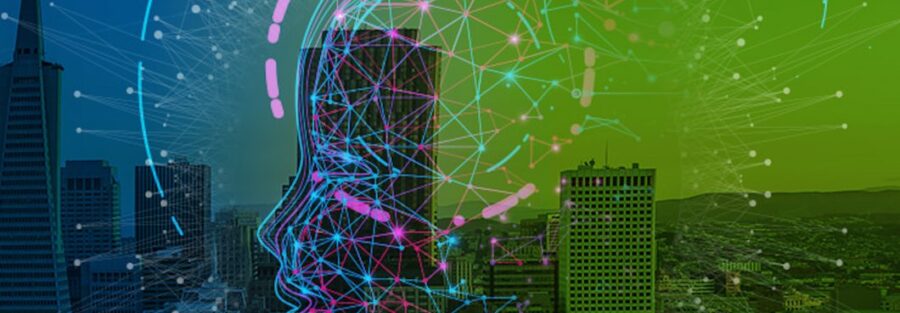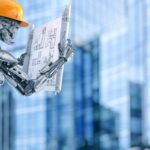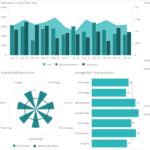Insight Into the Future of Machine Learning in Construction
When most people hear the term “machine learning” the last thing they think of is a technology with a human touch. More so, apprehensions can arise because it feels like the concept is void of humanity entirely. However, especially in construction, machine learning can improve the daily lives of humans on the jobsite.
While machine learning in construction might feel like a far-away concept, decades away from becoming a reality, the future of the technology is closer than you think. In fact, machine learning has been steadily gaining buzz in the building industry. While it may seem like a highly technical non-human approach, but it can actually make things more human. Instead of taking humans out of the equation, machine learning lets people do their real jobs more effectively.
The construction industry hasn’t made as many technological advances as many other industries, and this has made things ever-more harder for its labor. Yet, it’s difficult to find the resources to implement new technologies while staying on track with your projects. Machine learning could help the industry skyrocket forward, improving things on a daily basis for workers, contracting companies and end clients.
If you’re willing to get on board, machine learning in construction could help improve safety, productivity, quality and other vital measures. This technology can take over monotonous duties and help with design and planning, allowing the humans on the team to spend their time honing their expertise and creativity. Beyond that, machine learning can help teams and companies make informed predictions for a more streamlined business and workflow.
Below, we’ll provide an inside look into how the machine learning in construction can potentially shift the industry in favor of its human counterparts.
What Is Machine Learning?
Before we get too far into the subject, let’s make sure we cover the fundamentals, especially if you’re not familiar with the concept already. In the most basic sense, it is defined by the book “Machine Learning: An Artificial Intelligence Approach,” as “the ability to learn is one of the most fundamental attributes of intelligent behavior.’
Today, machine learning is a subset of artificial intelligence (AI). It sounds like science fiction, but its applications are more technical and highly practical.
Basically, machines can learn and predict outcomes on their own. Rather than a person programming them, they use software with algorithms that allow them to create predictions based on their analysis of data. For example, a machine can tell you that it needs preventative servicing.
Now, let’s get into what machine learning could do for projects and workers in the construction industry in particular.
4 Useful Applications for Machine Learning in Construction
1. Improve Quality of Designs
Machine learning can improve designs overall to make spaces better for its ultimate human end users. In one exemplary example, WeWork wanted its meeting spaces to match the ways people would be using the spaces. The workspace startup used machine learning to help understand and predict the frequency of use for these meeting rooms, and the company was able to design the space to best fit the needs of the people before starting construction on it.
The benefits of machine learning in design do not end there. Machine learning can also help workers figure out mistakes and omissions that might be present in the design before going forward with building. Instead, you can leave that to machine learning which ultimately saves teams critical times that can be used for more productive tasks. With machine learning, you can even test various environmental conditions and situations in the model. The technology can help to determine if a particular element of the design is optimal, or can predict if it could create an issue down the road.
2. Create a Safer Jobsite
Of course, increased safety is a priority for construction sites. Machine learning provides a high-tech way to achieve this goal.
Let’s look at an example of what machine learning is capable of accomplishing. For its annual Year in Construction Photo Contest, Engineering News Record uses experts to check for safety in the submitted photos. In 2016, it looked at the difference between human safety experts and VINNIE artificial intelligence for checking safety within the images.
VINNIE was able to find safety concerns, such as a person not wearing a hard hat, and did it much faster and more accurately than the human team. For comparison, the team of human experts checked more than 1,000 submissions in over 4.5 hours while it took VINNIE less than 10 minutes. The human team identified 414 images with people in them while VINNIE was accurate in finding 446.
The potential of this test is that a tool like VINNIE could quickly sort through data and provide relevant results to humans, who can then look more closely at the results. It’s worth noting that human experts can spot more safety problems, but machine learning can learn over time and help humans find some of the problems in a more efficient way. And at the end of a day, a safer site ultimately benefits the entire workforce overall.
3. Assess and Reduce Risk
One of the truly amazing things about machine learning is that it can figure out risks before they happen. This helps humans identify risks and figure out how to prevent problems from arising. Machine learning can identify risks, measure their impact and use predictive analytics to help you reduce risks.
Let’s take a look at another outstanding example of machine learning in construction in action. BIM 360’s Construction IQ looks at the challenges of leaders in the construction field to understand how AI could help with these challenges. It found that the AI algorithms were able to prioritize problems and understand risk, such as potential consequences if a concern was not handled. This has the potential to help construction managers streamline their workflow and prevent problems.
To learn more about how disruptors like Autodesk are successfully implementing machine learning in construction, watch the following video:
Another example is Pype. Pype’s solutions use artificial intelligence and machine learning to extract and process data from project plans and specifications. The resulting data provides insights on project management workflows, helps teams identify actionable information to close communication gaps between design, construction and operations teams, and ensures a higher level of quality, efficiency and risk management on projects.
4. Increase the Project’s Lifecycle
Beyond design and construction, machine learning can even be instrumental in facility management to extend the total lifecycle of an asset. In general, there are often gaps in important information in facility management. As a result, it’s difficult to efficiently and cost-effectively manage repairs and renovations on site.
Machine learning can help streamline the process by collecting and utilizing information and data information better. It can do this by classifying documents and data like work orders and assessing pertinent conditions in real time, with surprising accuracy. This takes away these tedious and time-consuming administrative duties from people and allows them to focus on the real problem at hand. Furthermore, if machine learning is integrated into a BIM model in operations and maintenance, it can also determine the best way to carry out maintenance and repairs by visualizing the when and where problems will occur.
What Will Drive Machine Learning in Construction Forward?
Ready to jump on board machine learning in construction as soon as possible? To be effective and accurate, machine learning needs large subsets of data. The lack of enough data is currently a major barrier keeping a lot of small and medium businesses from implementing this technology. Increased amounts of data that are integrated will help the entire industry move forward. Integrating technology systems will help more companies use machine learning to their advantage.
Unfortunately, even though a lot of information is digitized now, different technology platforms are not well or integrated at all, leaving data disconnected. Even within the same company, multiple platforms can be used that are not integrated. Many companies face the challenge of not having the time or resources to put towards meaningful integration. A connected and integrated platform is something that can help construction companies connect their different applications more seamlessly.
Your construction business can be more streamlined through integrated scheduled tasks and through the ability to transfer field report data to other applications. Also, an integration ecosystem can help your company to connect a variety of different software so you, and machine learning, can better use all your data within the same ecosystem. This will help the different parts of your business run smoother and help you have a better workflow.
The Takeaway: Machine Learning Helps People in Construction
We hope you can see what we see: that machine learning has some exciting possibilities within our industry for the future, beginning now. But while machine learning is likely to influence the future of construction, this certainly doesn’t mean devices and technology will replace us.
Construction is a human business, and it will stay that way. We need the skills, expertise and innovation of our workers to win the future. We can use machine learning as just another tool that will let our industry’s talents and progress shine. If we use it wisely, it can help us make the most of our creativity and ingenuity. You never know how far it could take our own human abilities.
By: Grace Ellis






